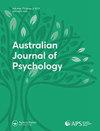通过信息框架和量身定制的风险反馈加强2型糖尿病风险沟通:一项在线随机对照试验
IF 3.6
4区 心理学
Q1 PSYCHOLOGY, MULTIDISCIPLINARY
引用次数: 1
摘要
摘要-目的2型糖尿病(T2D)风险沟通可以帮助个人更好地了解自己的风险并促使行为改变。在健康风险沟通方面有大量研究表明,信息框架和量身定制的风险反馈是有效的;然而,人们对其在同时使用和在高危人群中预防T2D的潜在效用知之甚少。方法本研究评估了信息框架和量身定制的风险反馈对T2D风险感知和行为意图的影响,以及这些影响是否因饮酒水平而异。347名在线参与者按饮酒水平进行分层,随后随机接受T2D信息、风险估计和生活方式建议,这些信息经过四种不同的信息框架和剪裁操作。结果研究组在T2D风险认知或行为意向方面没有观察到显著差异。然而,在所有情况下,T2D风险感知得分和准确性以及行为意图在干预后显著增加。结论尽管信息框架或信息剪裁没有影响,但本研究表明,简短的T2D风险在线沟通有助于纠正风险认知并提高行为意图。这些初步发现令人鼓舞,并支持继续发展在线风险评估和沟通,以帮助抗击当前的T2D流行病。关键点关于这个话题的已知情况:(1)大多数有2型糖尿病风险的人没有参与降低风险的行为。(2) 风险沟通可能有助于纠正2型糖尿病的风险认知,并导致健康的行为改变。(3) 信息框架和量身定制的风险反馈已被证明是有效的沟通方式,尽管没有研究将它们结合起来进行研究。本主题补充内容:(1)为纠正风险认知和提高行为意图的简短在线2型糖尿病风险沟通干预提供初步支持。(2) 操纵的有效性并没有因信息操纵而有所不同。(3) 为在高危人群中使用风险沟通干预措施提供初步支持。本文章由计算机程序翻译,如有差异,请以英文原文为准。
Enhancing Type 2 diabetes risk communication with message framing and tailored risk feedback: an online randomised controlled trial
ABSTRACT Objective Type 2 diabetes (T2D) risk communication may help individuals better understand their risk and motivate behavioural changes. There is a wealth of research in health risk communication which suggest the effectiveness of message framing and tailored risk feedback; however, little is known about their potential utility when used concurrently and in high-risk population approaches to T2D prevention. Methods This study evaluated the effects of message framing and tailored risk feedback on T2D risk perception and behavioural intentions, and if these effects were varied by level of alcohol consumption. Three hundred and forty-seven online participants were stratified by levels of alcohol consumption and subsequently randomised to receive T2D information, risk estimates, and lifestyle recommendations that were subjected to four different message framing and tailoring manipulations. Results No significant differences were observed in T2D risk perceptions or behavioural intentions by study arm. However, T2D risk perception scores and accuracies, and behavioural intentions significantly increased post-intervention across all conditions. Conclusions Despite the lack of impact of message framing or message tailoring, this study suggests that a brief online T2D risk communication can help to correct risk perceptions and increase behavioural intentions. These preliminary findings are encouraging and support the continued development of online risk assessment and communication to help combat the current T2D epidemic. KEY POINTS What is already known about this topic: (1) Most individuals at risk of Type 2 diabetes do not engage in risk-reducing behaviours. (2) Risk communication may help to correct Type 2 diabetes risk perception and lead to healthy behavioural changes. (3) Message framing and tailored risk feedback have been shown to be effective ways of communication, though no studies have examined them in combination. What this topic adds: (1) Preliminary support for the brief online Type 2 diabetes risk communication intervention in correcting risk perceptions and increasing behavioural intentions. (2) Effectiveness of manipulation did not differ based on message manipulation. (3) Preliminary support for the use of the risk communication intervention in high-risk populations.
求助全文
通过发布文献求助,成功后即可免费获取论文全文。
去求助
来源期刊

Australian Journal of Psychology
PSYCHOLOGY, MULTIDISCIPLINARY-
CiteScore
5.50
自引率
0.00%
发文量
19
期刊介绍:
Australian Journal of Psychology is the premier scientific journal of the Australian Psychological Society. It covers the entire spectrum of psychological research and receives articles on all topics within the broad scope of the discipline. The journal publishes high quality peer-reviewed articles with reviewers and associate editors providing detailed assistance to authors to reach publication. The journal publishes reports of experimental and survey studies, including reports of qualitative investigations, on pure and applied topics in the field of psychology. Articles on clinical psychology or on the professional concerns of applied psychology should be submitted to our sister journals, Australian Psychologist or Clinical Psychologist. The journal publishes occasional reviews of specific topics, theoretical pieces and commentaries on methodological issues. There are also solicited book reviews and comments Annual special issues devoted to a single topic, and guest edited by a specialist editor, are published. The journal regards itself as international in vision and will accept submissions from psychologists in all countries.
 求助内容:
求助内容: 应助结果提醒方式:
应助结果提醒方式:


